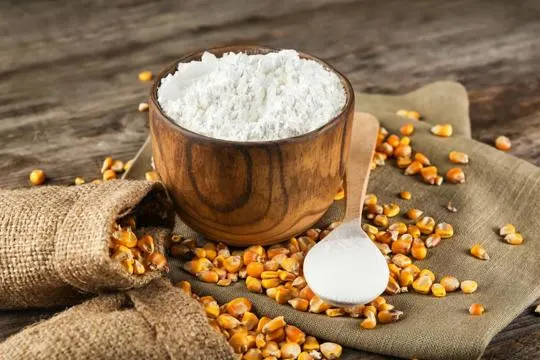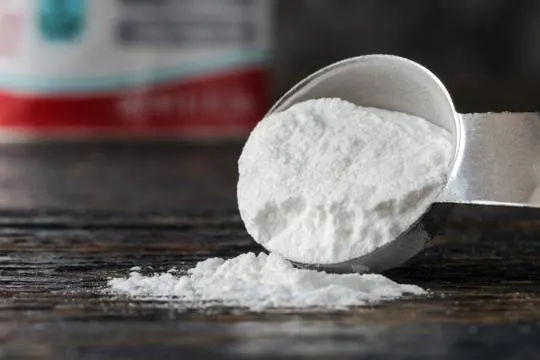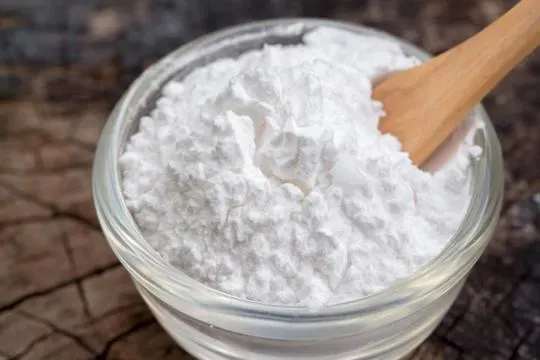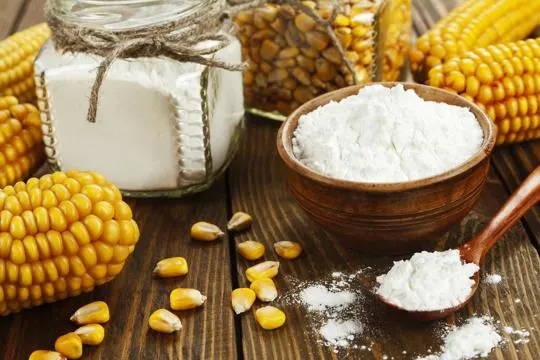Summary of key points
The main difference between corn starch and baking powder lies in their purpose and ingredients. Corn starch is a fine, white powder made from the endosperm of corn kernels and is primarily used as a thickening agent in cooking and baking. Baking powder, on the other hand, is a leavening agent made from a combination of baking soda, cream of tartar, and a moisture-absorbing ingredient, such as corn starch.
In terms of functionality, both are commonly used in baking to add volume and texture to baked goods. However, corn starch is often used as a thickener in sauces and soups, while baking powder is primarily used in recipes that require rising, such as cakes and breads.
Another distinction is their versatility. Corn starch has a neutral flavor and can be used in both savory and sweet dishes, while baking powder has a slightly tangy taste and is mostly used in desserts.
We’ve all been there. Middle of baking and bam, the recipe calls for baking powder and all you find is corn starch.
What gives? They’re both white powders, right?
Yet, their roles in the kitchen couldn’t be more different.
One’s got the rise, the other the thickening mojo. We learned this the hard way during a cake disaster. Yours truly, the chef of gooey centers and deflated dreams.
In this showdown, we’re tearing down myths and baking up facts.
Stick with us to clear the confusion.
What is Corn Starch?

Corn starch is versatile.
It comes from the endosperm of corn kernels and looks like a fine powder.
It is famous for its ability to thicken liquids.
Corn starch is used in many dishes, like soups, sauces, pies, and puddings.
It has no flavor or smell, making it easy to blend into recipes.
Plus, it gives a smooth texture.
Corn starch is gluten-free and perfect for people with gluten sensitivities or special diets.
Because of its neutral taste and thickening abilities, it is a staple in many kitchens.
What is Baking Powder?

Baking powder is an essential ingredient in baking – a leavening agent that helps dough and batter rise.
It’s made of baking soda, cream of tartar, and cornstarch.
When mixed with liquid and heated, it produces gas bubbles that make baked goods expand, becoming light and airy.
It has more than just leavening properties.
It can stabilize, and improve the texture and taste of baked goods.
The cream of tartar in the powder is an acid that reacts with the baking soda.
This releases carbon dioxide gas, which makes the dough or batter swell.
Baking powder is unique.
It’s a double-acting leavening agent, which means it starts working when you mix it with liquid, and again when it’s heated.
Differences Between Corn Starch and Baking Powder

Corn starch and baking powder are two ingredients often used in cooking and baking.
But, they are not the same.
The outcome of your recipes can be greatly impacted by the differences.
Composition and Ingredients
Corn starch and baking powder are often used for cooking and baking.
Though alike, they have various compositions and serve diverse purposes in recipes.
Corn starch comes from corn kernels’ endosperm.
It is a fine, white powder made mostly of starch molecules.
When added to liquids, it thickens them – perfect for sauces, gravies, and soups.
Corn starch acts as a binder, soaking up moisture and creating a thick texture.
In contrast, baking powder is a mix of several ingredients.
These include sodium bicarbonate (baking soda), cream of tartar, and a dry acid like calcium acid phosphate or sodium aluminum sulfate.
When mixed with moisture and heat, these ingredients make carbon dioxide gas.
This gas forms bubbles in the dough or batter, making it rise during baking.
The difference between corn starch and baking powder is in their functions.
Corn starch thickens, whereas baking powder causes rising.
Therefore, they can’t be swapped in recipes.
To sum up, though both are common, corn starch and baking powder have different compositions and roles in cooking.
Knowing their unique characteristics will help you when making your favorite meals or treats.
Function and Leavening Power
Corn starch and baking powder are two completely different ingredients.
Corn starch is mainly used for thickening sauces and soups.
Baking powder, on the contrary, is used to make baked goods light and fluffy.
Corn starch is made from corn kernels, and it has the ability to absorb moisture and thicken liquid.
But it doesn’t have the leavening power that baking powder does.
Baking powder is a mix of sodium bicarbonate and an acid, like cream of tartar.
When exposed to heat, the reaction between these ingredients creates carbon dioxide gas bubbles that cause the dough to rise.
The difference between corn starch and baking powder is that baking powder has a quick chemical reaction.
It releases carbon dioxide, creating air pockets which give baked goods their airy texture.
These two ingredients have their own purpose in the kitchen.
So when you are cooking something, make sure you choose the right one depending on what you want to achieve.
Usage in Cooking and Baking
Corn starch and baking powder are two vital ingredients in cooking and baking.
Corn starch thickens sauces, soups, and gravies for a smooth texture.
Baking powder is a leavening agent that causes doughs and batters to rise.
Corn starch must be mixed with cold water before adding to hot liquids.
It should only be cooked for a short time to retain its thickening power.
Baking powder is added directly to dry ingredients.
It reacts with moisture to release carbon dioxide gas for lighter texture.
Don’t overmix the batter after adding baking powder.
Corn starch has a neutral taste, which is perfect for thickening without altering flavor.
It’s also a binder for gluten-free recipes.
Baking powder not only helps doughs rise, but also promotes browning due to its alkaline properties.
Corn starch and baking powder have distinct functions.
Corn starch thickens, and baking powder helps doughs rise and adds browning.
Understanding their differences helps cooks and bakers create delicious dishes.
Effects on Texture and Appearance
Baking requires a choice between two ingredients: corn starch or baking powder.
Corn starch is great for thickening sauces and making baked goods dense and chewy.
Baking powder, on the other hand, will make them light and fluffy.
Corn starch helps cookies keep their shape and size, while baking powder can give them a golden brown color.
It’s important to note that corn starch and baking powder cannot be used interchangeably.
Corn starch is mainly for thickening, while baking powder is key for getting cakes to rise.
Swapping one for the other could lead to poor results.
Similarities Between Corn Starch and Baking Powder

Corn starch and baking powder have their differences.
Yet, they share some similarities too.
Both are widely used in cooking and baking.
They help thicken and lighten recipes.
Plus, they create a smoother texture in dishes.
Sometimes, one can be a substitute for the other.
This makes them both useful ingredients in the culinary world.
To get the best results in cooking, it’s important to understand their individual characteristics and uses.
Substituting Corn Starch for Baking Powder and Vice Versa
Corn starch and baking powder are two ingredients often used in cooking and baking.
Though they look alike, they have different functions and can’t be directly swapped.
Corn starch, also called corn flour, is a fine white powder made from corn kernels.
It’s mainly used as a thickener in sauces, soups, and gravies.
Heat helps it absorb liquid, creating a gel-like consistency that thickens the mixture.
Corn starch is also used in baking to give desserts a smooth texture.
Baking powder is a leavening agent, making baked goods rise and become fluffy.
It’s made of an acid (e.g. cream of tartar) and a base (e.g. sodium bicarbonate).
Moisture and heat activate it, creating carbon dioxide gas bubbles that lift the dough or batter.
Swapping one for the other can change the texture and flavor of the dish.
If you run out of either ingredient, there are alternatives you can try.
To thicken, use arrowroot powder or tapioca starch (1:2 ratio).
To replace baking powder, mix 1/4 teaspoon of baking soda with 1/2 cup of buttermilk or yogurt (for every 1 teaspoon of baking powder).
The acidity in these dairy products will activate the baking soda, like the acid in cream of tartar activates baking powder.
In short, corn starch and baking powder have different purposes in cooking and can’t be used interchangeably.
Knowing their unique properties will help you make successful dishes every time.
Tips for Using Corn Starch and Baking Powder
Corn starch and baking powder are two ingredients often used for cooking and baking.
Although they may look similar, there are key differences.
Here are some tips to use them effectively.
- Corn starch acts as a thickening agent in dishes such as soups, sauces, and gravies. It binds the ingredients and creates a smooth texture.
- Baking powder is a leavening agent that helps batters and doughs rise when baked. It contains an acid and a base which react with moisture and heat to form carbon dioxide gas.
When using corn starch, dissolve it in a little cold water first.
This stops clumps and ensures even distribution.
Also, add it towards the end of cooking, as prolonged heating can break it down and reduce its thickening power.
For baking powder, measure carefully.
Too much or too little affects the texture of the baked goods.
Use fresh baking powder near the expiration date.
Sift the dry ingredients and baking powder together for even distribution.
Finally, store both corn starch and baking powder in a cool, dry place away from direct sunlight.
This preserves their effectiveness and extends their shelf life.
Conclusion
As we have learned, cornstarch and baking powder are either both leavening agents or starches.
However, they have many differences in the way they function and in their ratios of ingredients such as cornstarch to baking powder.
Cornstarch is used primarily as a thickener whereas baking powder is used more often when a dish needs a gentle lift due to its chemical reaction with liquids.
The ratio between the two will depend on what type of final product you want to produce.
For instance, if an airy cake is desired, then more baking powder should be added than if you wanted a dense muffin.
Ultimately, understanding the different functions and ratio for each of these ingredients could become the key ingredient to creating that perfect dish.

Leave a comment